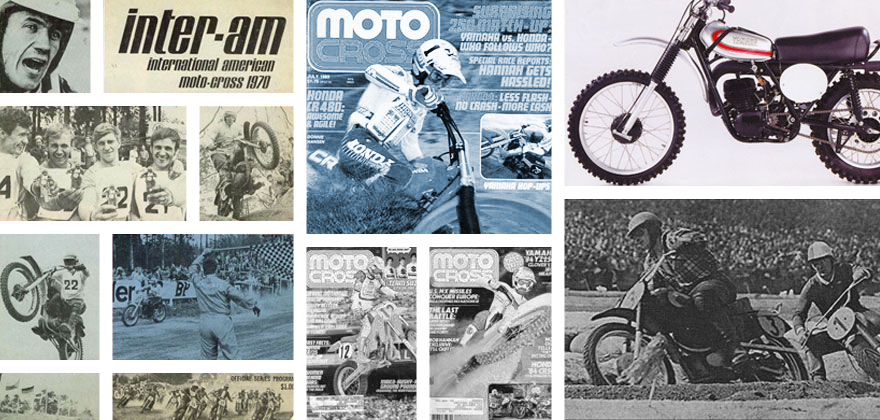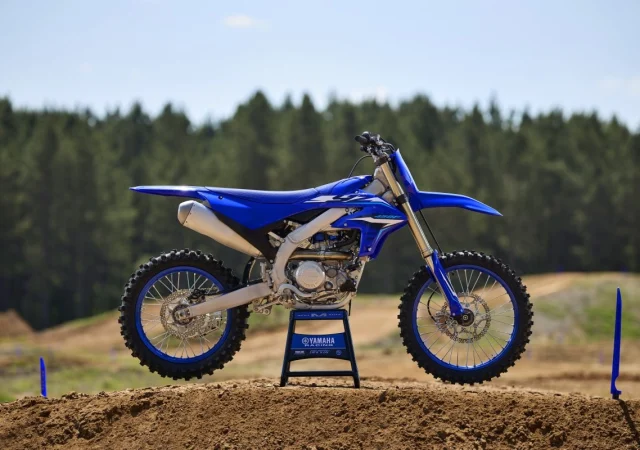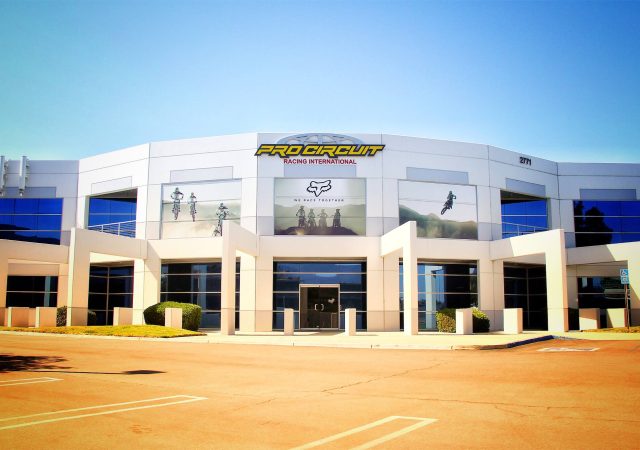
For this edition of Classic Ink, we are going to look back at the 1985 Kawasaki Motocross lineup.
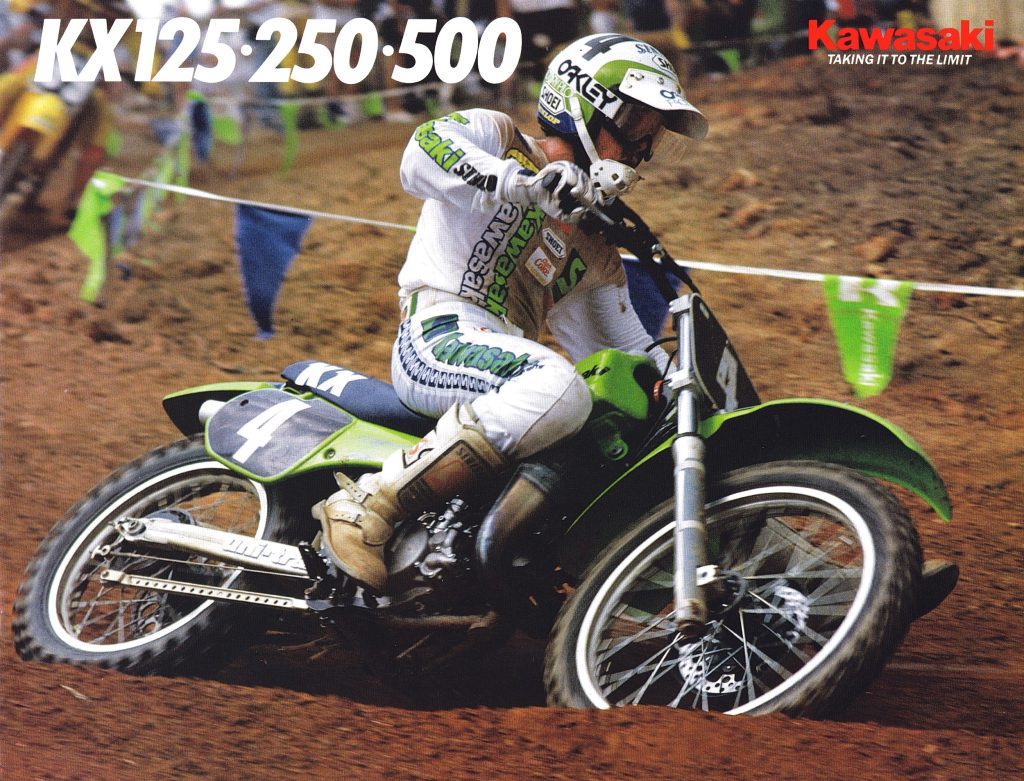 Jeff Ward and a works version of the KX125 grace the cover of the 1985 Kawasaki KX brochure. In 1984, Wardy piloted this SR125 (Kawasaki’s internal works designation) to the first of his six AMA MX/SX National titles. Photo Credit: Kawasaki
Jeff Ward and a works version of the KX125 grace the cover of the 1985 Kawasaki KX brochure. In 1984, Wardy piloted this SR125 (Kawasaki’s internal works designation) to the first of his six AMA MX/SX National titles. Photo Credit: Kawasaki
In 1985, the era of the works bike in America was quickly coming to an end. The arrival of the “Production Rule” in 1986 would put an end to the exotic one-off machines that had graced America’s tracks for over a decade. While this was a negative for professional racing fans in the US, most people agree now that it helped push the manufacturers to improve the quality of what they were offering to the public.
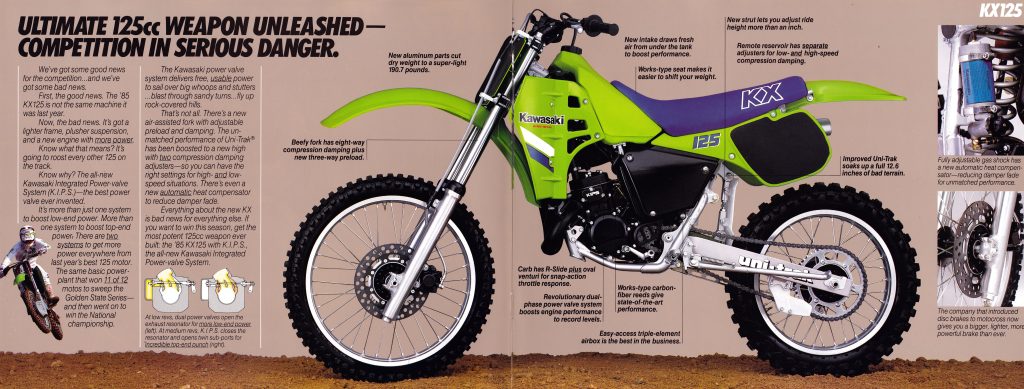 In 1985, the KX125 was the Top Fueler of the 125 class. The arrival of the Kawasaki Integrated Power-valve System (KIPS) widened its already impressive horsepower advantage. In 1985, the green machine was the hot ticket to the winner’s circle in the 125 class. Photo Credit: Kawasaki
In 1985, the KX125 was the Top Fueler of the 125 class. The arrival of the Kawasaki Integrated Power-valve System (KIPS) widened its already impressive horsepower advantage. In 1985, the green machine was the hot ticket to the winner’s circle in the 125 class. Photo Credit: Kawasaki
In 1985, Kawasaki introduced the motocross world to the formula for producing broad power in a two-stroke design. Going by the acronym “KIPS” for Kawasaki Integrated Power-valve System, this new variable exhaust system combined the variable exhaust port control of Yamaha’s Yamaha Power Valve System (YPVS) with the exhaust resonator found on Honda’s Automatic Torque Amplification Chamber (ATAC). By combining these two technologies, Kawasaki was able to both boost low-end torque and improve top-end performance.
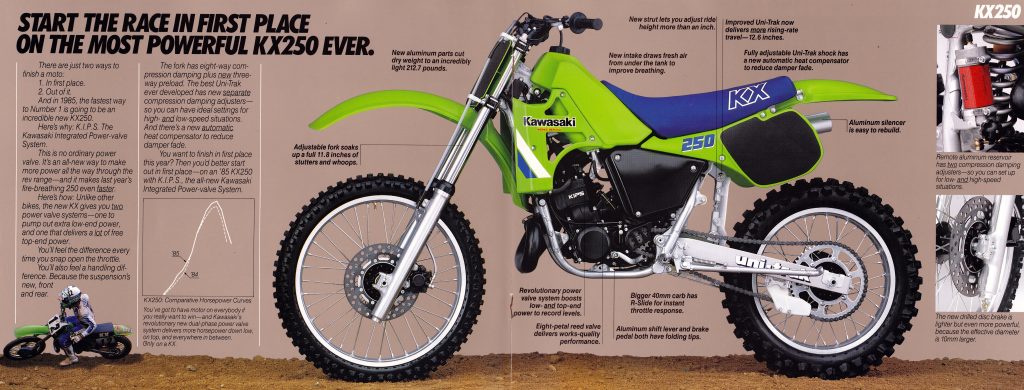 Kawasaki’s KX250 also got the KIPS treatment for 1985 but its results were less impressive than on the 125. The all-new machine was very handsome and high-tech, but it was not a world beater on the track. The redesigned motor made tons of power, but its powerband was too abrupt for most and hindered by a grabby and difficult to modulate clutch. The huge wallop of midrange power was fun, but it left even skilled riders searching for traction out of turns. Add in cranky handling and grim forks and you had a mid-pack finisher in 1985. Photo Credit: Kawasaki
Kawasaki’s KX250 also got the KIPS treatment for 1985 but its results were less impressive than on the 125. The all-new machine was very handsome and high-tech, but it was not a world beater on the track. The redesigned motor made tons of power, but its powerband was too abrupt for most and hindered by a grabby and difficult to modulate clutch. The huge wallop of midrange power was fun, but it left even skilled riders searching for traction out of turns. Add in cranky handling and grim forks and you had a mid-pack finisher in 1985. Photo Credit: Kawasaki
The new KIPS system was rolled out on the KX125 and KX250 in 1985 and eventually added to the big bore KX500 in 1986. While not every brand was quick to add a version of the KIPS to their two-stroke lineup, the test of time would prove the superiority of the Kawasaki design. By the late nineties, Honda, Yamaha, and Suzuki all moved to a version of the dual-pronged KIPS approach for their two-stroke machines. By combining both variable exhaust technologies, the engineers were able to provide the best combination of power and rideability.
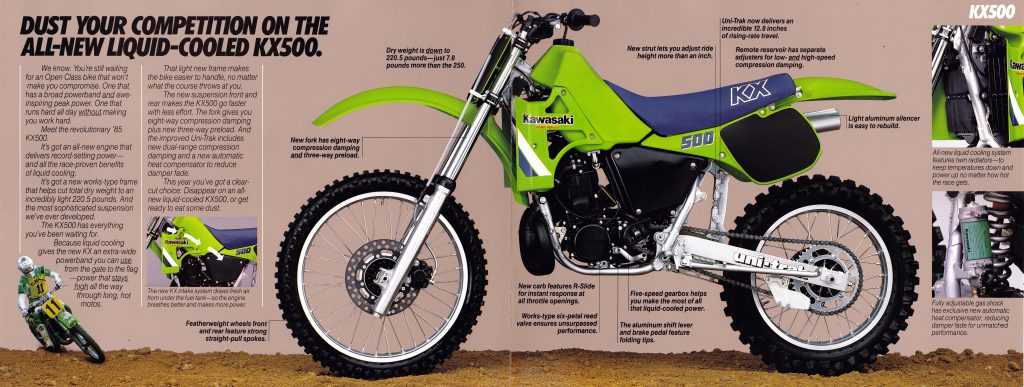 The mighty KX500 did not get the KIPS in 1985, but its sleek bodywork and new liquid-cooled power plant were a huge improvement over previous green big bores. It was far easier to ride than the brutally fast Honda and but like the KX250, its disappointing stock suspension held it back from being a class leader in 1985. Photo Credit: Kawasaki
The mighty KX500 did not get the KIPS in 1985, but its sleek bodywork and new liquid-cooled power plant were a huge improvement over previous green big bores. It was far easier to ride than the brutally fast Honda and but like the KX250, its disappointing stock suspension held it back from being a class leader in 1985. Photo Credit: Kawasaki
Originally introduced in 1980, Kawasaki’s original Uni-Trak bell-crank linkage was the first of the modern single shock rear suspension systems. Like the original Full Floater, the Uni-Trak was large, highly placed, and not ideal for suspension packaging. Over its six-year run, Kawasaki refined and lighted construction, but by the mid-eighties it was becoming apparent that Honda’s “bottom link” design offered significant advantages in packaging and weight distribution. The 1985 season is the last year the entire KX lineup used the original “dog bone” Uni-Track design with the KX80 and KX126 moving to a Honda-style bottom link in 1986. The KX250 and KX500 would get the new Uni-Trak in 1987, but the ageless KX60 would continue to feature the original Uni-Trak design until its final retirement in 2003.
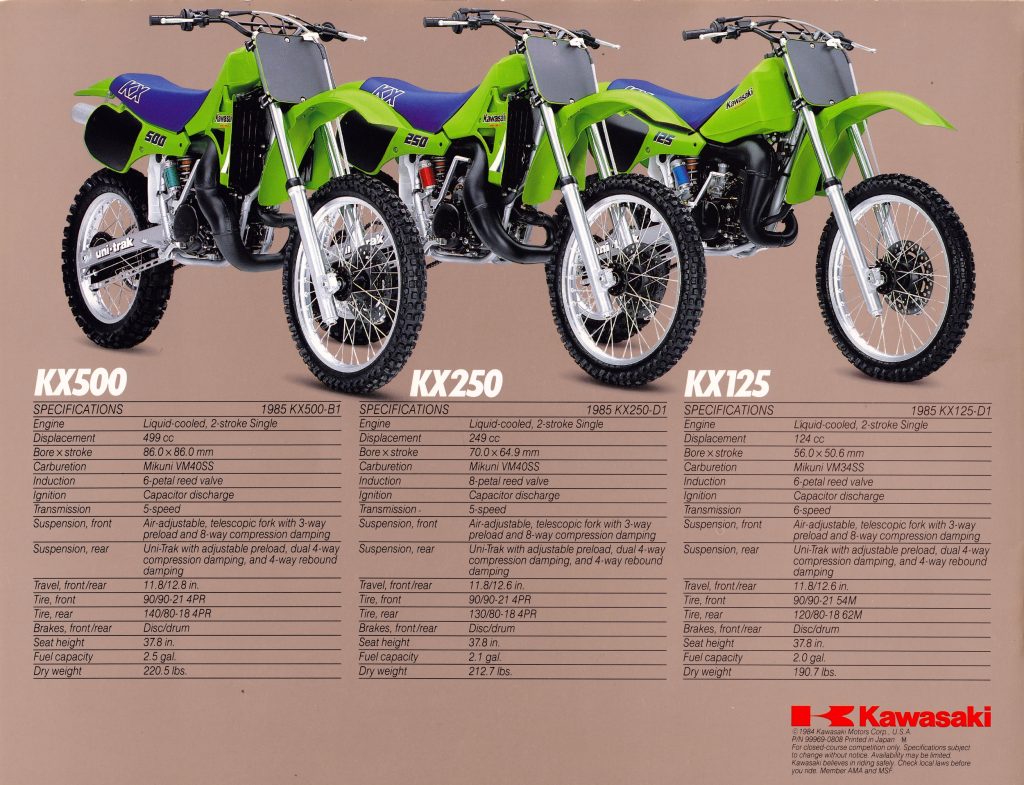 After several years of quirky and disappointing machines, Kawasaki’s motocross lineup made major strides in 1985.
After several years of quirky and disappointing machines, Kawasaki’s motocross lineup made major strides in 1985.

